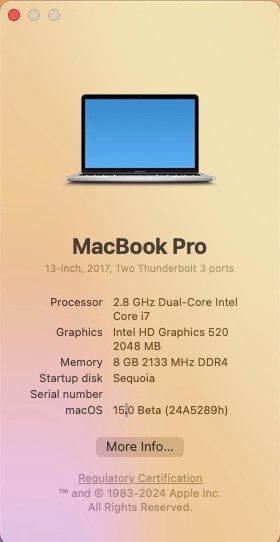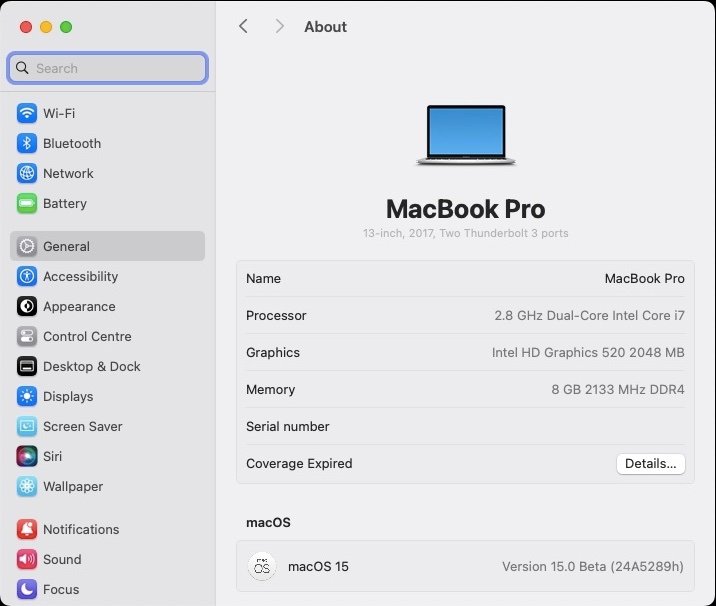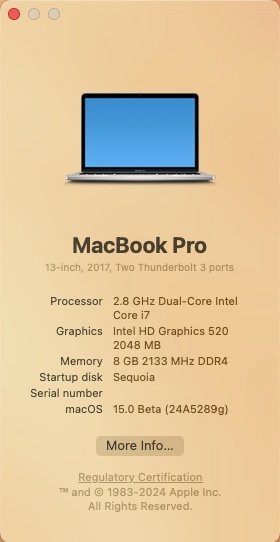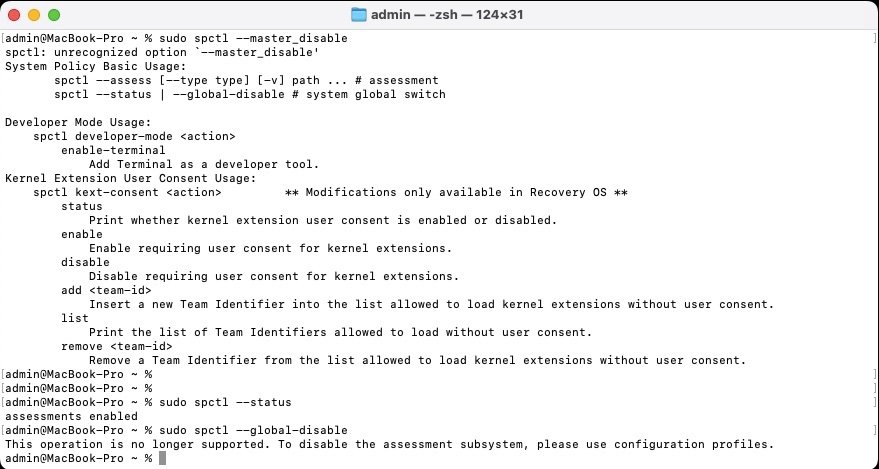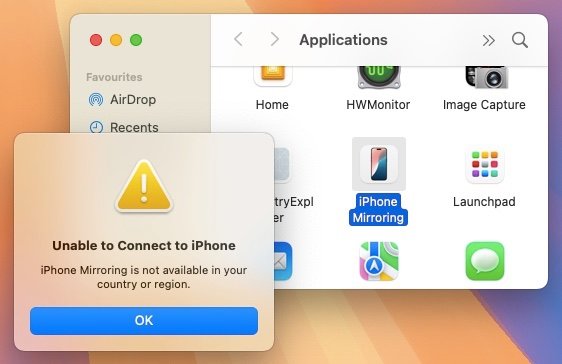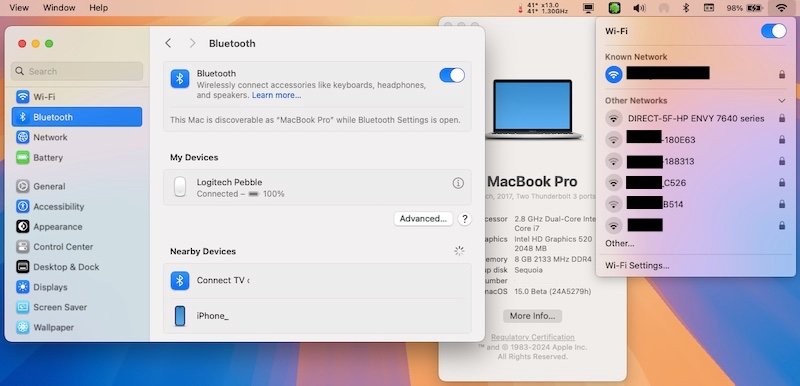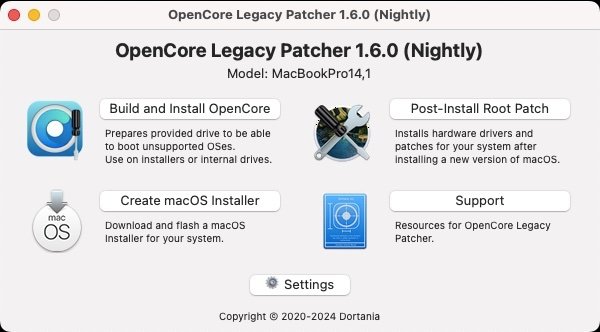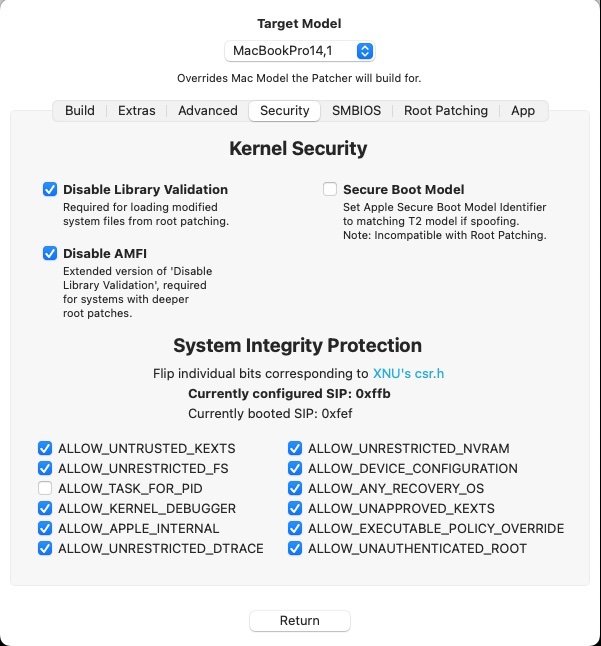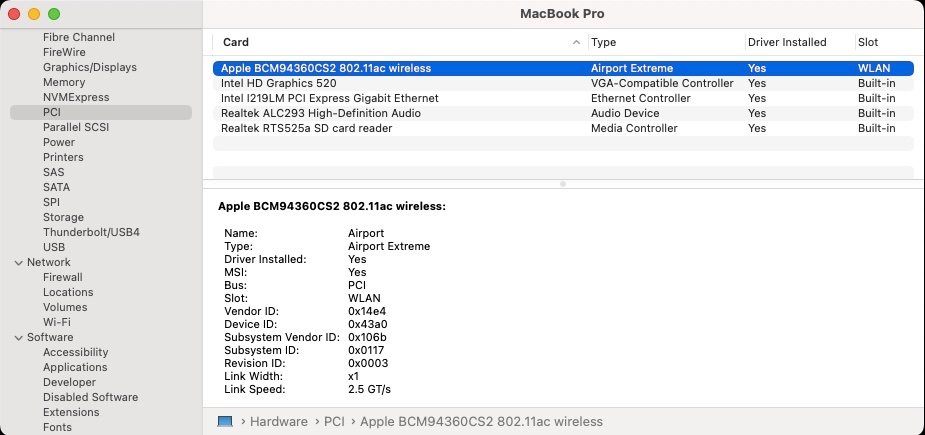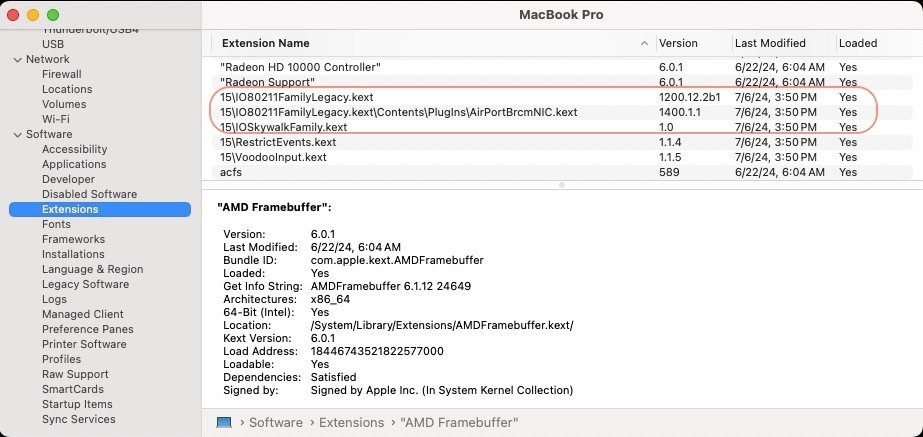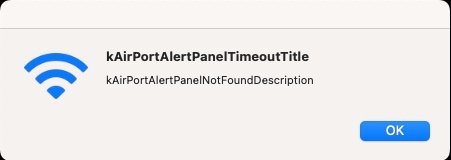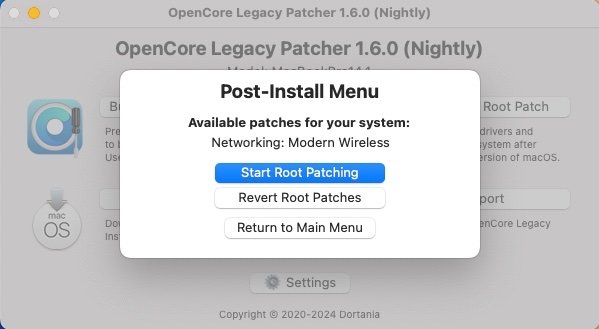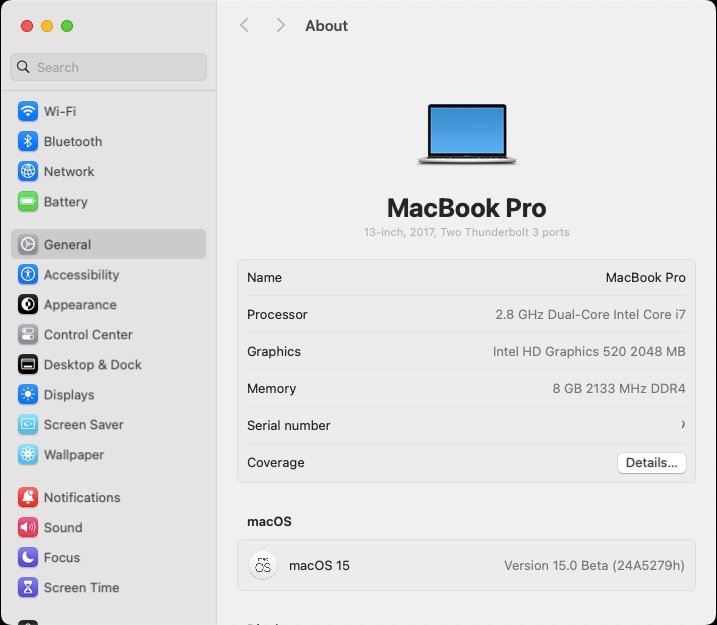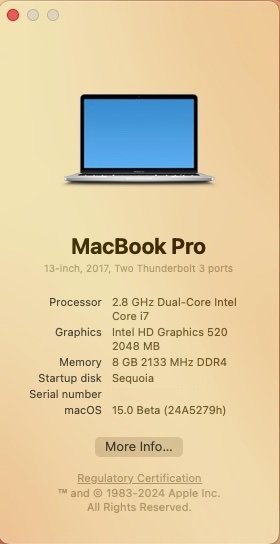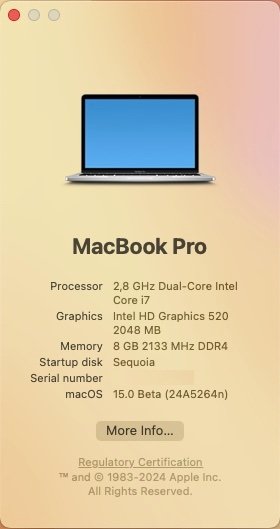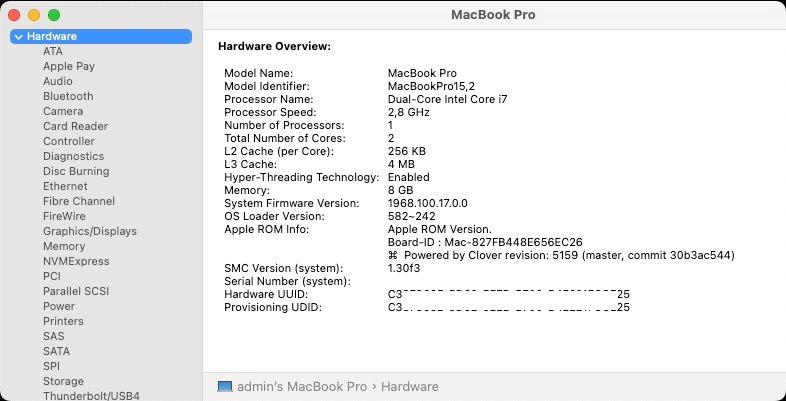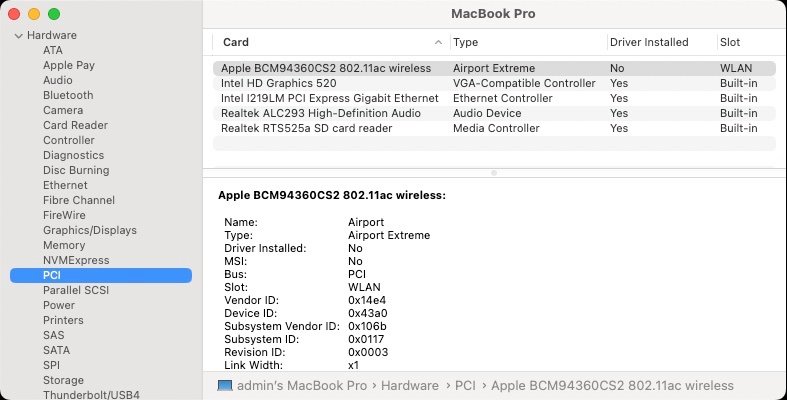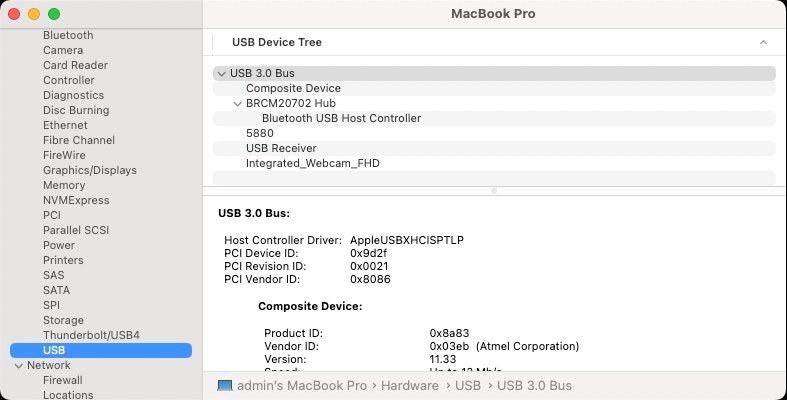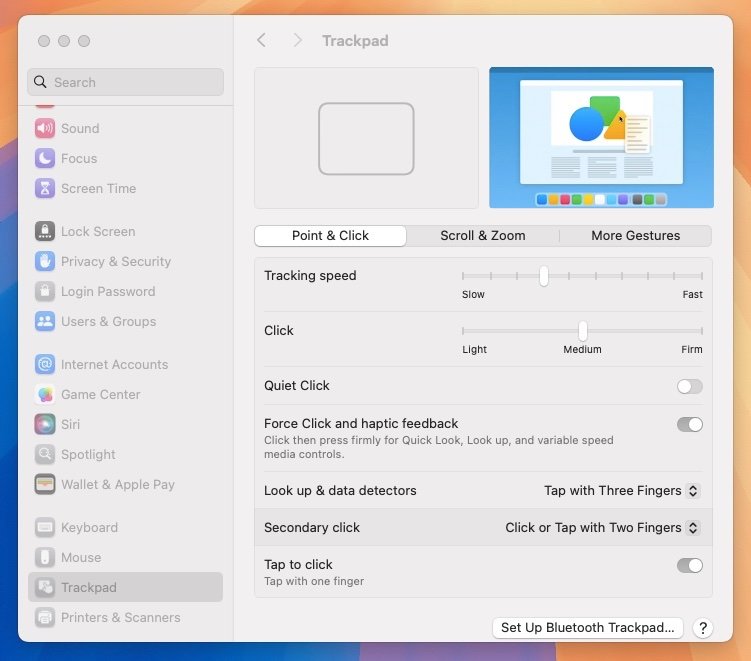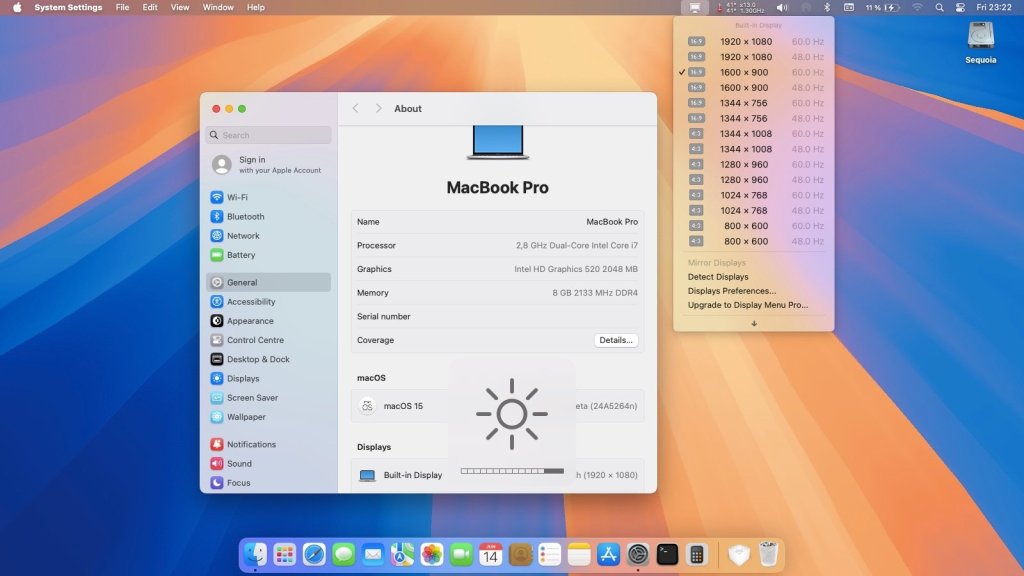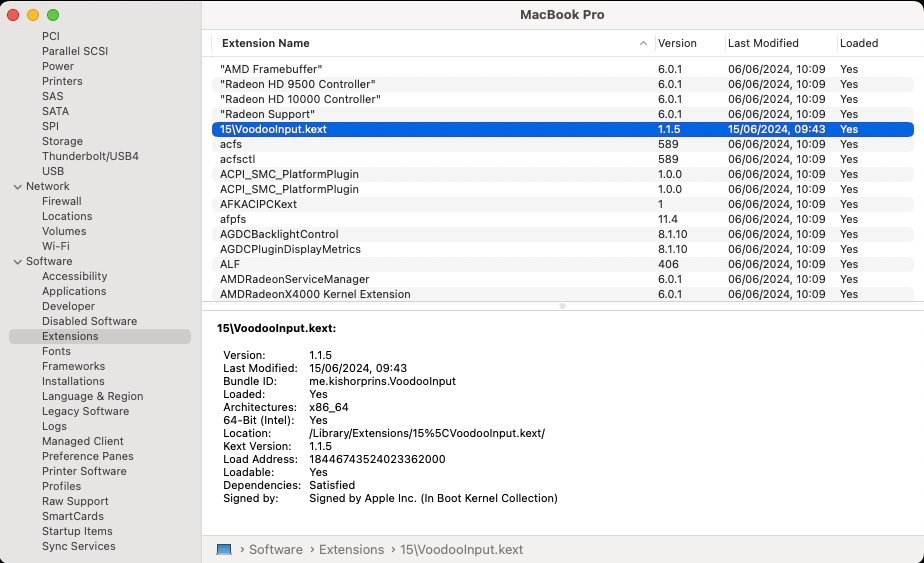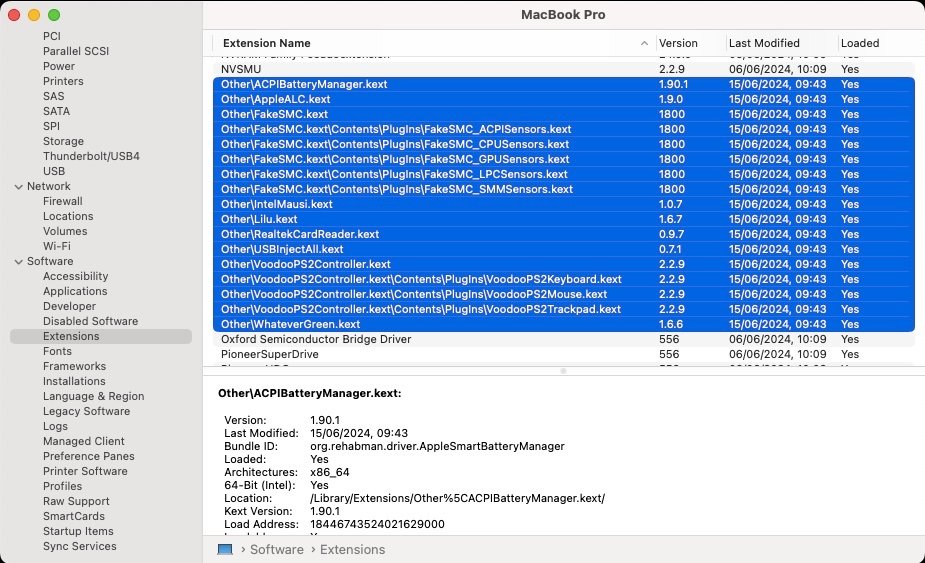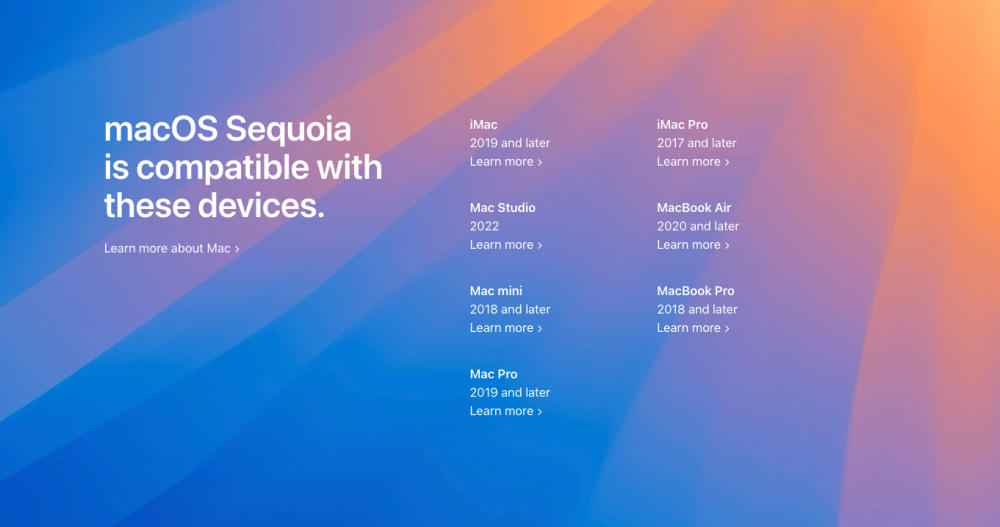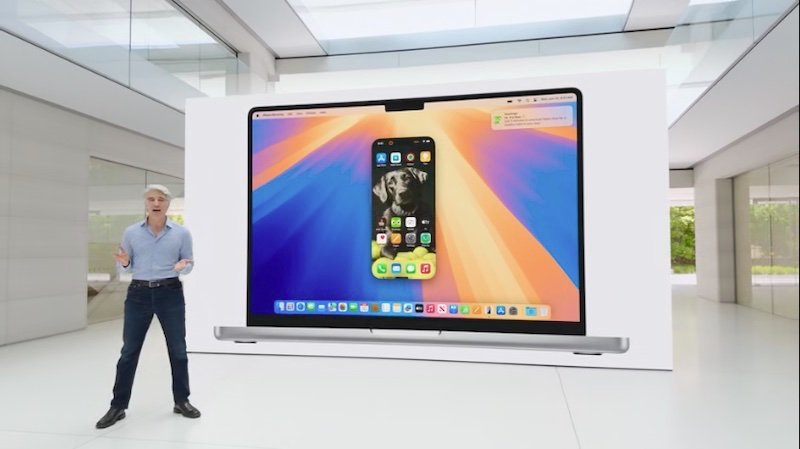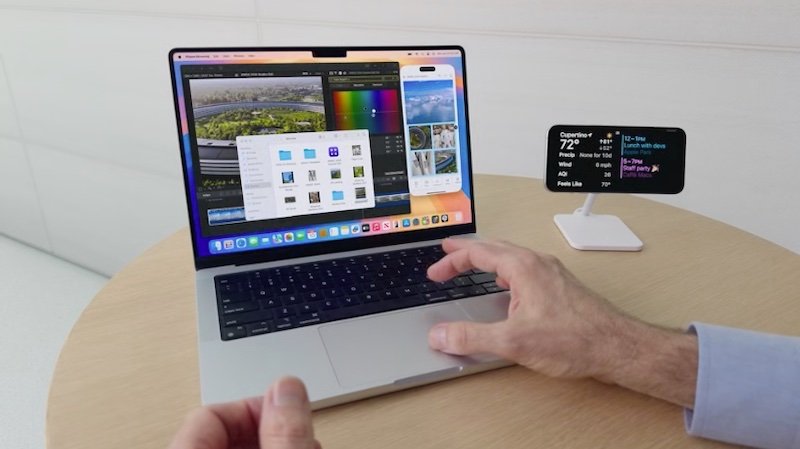-
Posts
10068 -
Joined
-
Last visited
-
Days Won
569
Content Type
Profiles
Articles, News and Tips
Forums
Everything posted by Hervé
-

Optiplex 3040 i5-6500 HD530: Sequoia installation
Hervé replied to karahanzorbey's topic in The Archive
-> moved to Sequoia beta section. Do post a zipped copy of your bootloader config file + kexts folder and do tell what bootloader you're using and its version. Not much we can do without this... Now, regarding graphics acceleration on HD530, Monterey was the last macOS version to natively support Skylake (SKL) graphics. Starting with Ventura, such graphics acceleration can only be obtained by faking/using Kaby Lake (KBL) iGPU settings. One additional point to keep in mind is that graphics acceleration on desktop HD530 is now a challenge and failure often reported. Attempting this with a pre-release version of macOS is probably not the best way to go at this point of time and I would recommend you stick to Ventura or Sonoma 1st. I suggest you consult the following threads/pages: https://osxlatitude.com/forums/topic/8238-supportedunsupported-gpus-graphics-cards https://dortania.github.io/GPU-Buyers-Guide/modern-gpus/intel-gpu.html#skylake-6xxx https://github.com/acidanthera/WhateverGreen/blob/master/Manual/FAQ.IntelHD.en.md and those Sequoia beta threads I posted in this very section -
You know the drill, no crystal ball...
-
Released July 15th, 2024. Build 24A5289h. This may also be offered to beta 3 users as an update to beta 3 build 24A5289g of July 10th. No issues on Hackintosh, no-brainer update. The only issue I encountered was with OCLP. The app, as previously installed, would simply fail to execute properly when I tried to re-apply root patching; I had to remove it and re-install it (exact same nightly build version as used before). After that, all was Ok. Same Clover r5159 setup for my Dell Latitude E7270 as used with initial beta3 version and posted here.
-
Hello. Update your injected kexts to latest version if required and add boot arg -lilubetaall to be on the safe side. Set SecureBoot mode to disabled, I think it remains required for installations. If necessary, adjust your SMBIOS to that of a supported model. Other than that, you should be good to go.
-
Released July 10th, 2024. Build 24A5289g. Straight update; no change to the bootpack. Some significant changes to Gatekeeper with this 3rd beta: it can no longer be disabled with command sudo spctl --master-disable; the command is deprecated. Apple has decided to drop support for global subsystem assessment which, until now, allowed users to disable Gatekeeper and allow all apps to be run without assessment. See the built-in manual for details (man spctl). https://developer.apple.com/documentation/devicemanagement/systempolicycontrol Here is my revised Clover r5159 setup for my Skylake/HD520 Dell Latitude E7270 laptop, now including the settings to support legacy wireless services after OCLP Modern Wireless Networking root patching. E7270_Clover_pack_Seq_15.0.b3.zip
- 1 reply
-
- 1
-

-
iPhone Mirroring not working (yet?), no matter the region/country set on Hack and iPhone (upgraded to IOS 18.0 beta of course).
-
Broadcom wifi now fully operational as detailed here.
-

Wifi in Sequoia 15.0 beta: Patching for legacy Broadcom wireless cards
Hervé replied to Hervé's topic in The Archive
The devs have done a good job again and latest nightly builds of OCLP 1.6.0 now provide the fix for Broadcom Wifi in Sequoia. It's basically the same fix as for macOS Sonoma described here. https://github.com/dortania/OpenCore-Legacy-Patcher/actions For Clover users, once you've run the patcher and applied the root patches (Modern Wireless Networking), make sure to reboot with: Latest AMFIPass kext or boot arg amfi_get_out_of_my_way=1 BlockSkywalk kernel & kext patch enabled patched IO80211FamilyLegacy + IOSkywalkFamily kexts as available here (same as required since Sonoma 14.4) Example with my Latitude E7270 fitted with an Apple BCM94360CS2 wireless card: Caution though because the paint still is a bit wet and I've noticed this on a couple of occasions after wake, which required to reconnect manually via the Wifi PrefPane: -
The thread is pinned at the top of this very forum section...
-
This message is usually associated with absence of disk or no boot sector. 1st make sure that the disk is visible/detected in BIOS settings. If it is and it remains non-bootable, you probably did not install your newer Clover version with the suitable settings (legacy vs. UEFI for instance). You'll have to recover your installation through an alternative boot device, whether a USB key or an external USB disk for instance. It dates back to Oct 2019 so it's a bit old now but here, you'll find details of Clover version and Clover settings that I used for Catalina on the Latitude E7250. Then you may look at my E7270 guide for Clover settings used to install more recent versions of Clover and macOS. Recommended BIOS settings for the E7250 (and E7270) are available at the top of the E7xxx forum section.
-
Hassle? What hassle? Can't see why you'd have much trouble trying to install and run Sequoia beta on your E5470 or on a E7470. No support for legacy Broadcom wireless cards for the moment. See our other dedicated thread on the matter.
-
Released June 24th, 2024. Build 24A5279h. Available through OTA with @Lorys89's version of RestrictEvents v1.1.4 of June 2024 as long as your Apple account is registered for beta updates. RestrictEvents.kext.zip Failing that, install assistant package is available here. Straight update; a bit long to complete. No changes to bootpack used for beta 1.
-
Just adapt any/your Sonoma build; it does not require much changes. See my "early feedback" thread where I've detailed things for my Skylake/HD520 E7270.
-
Last updated: 14 Jun 2025 Restoring support for dropped GPUs in macOS Sequoia. Sequoia did not drop additional GPUs. As such, the same patches that applied to Ventura and Sonoma can be applied to Sequoia. OCLP was updated to provide all the necessary support to that effect. For Skylake iGPUs, the same good old patches may also be applied to obtain full graphics acceleration in Sequoia, i.e. fake KBL graphics.
-
-> moved to Sequoia beta section. For your touchpad, if you use VoodooPS2Controller kext, you need to replace its VoodooInput plugin by 1Revenger1's version 1.1.5. See my "early feedback and findings" thread pinned in this very section.
-
List of dropped platforms only extends to Intel 8th gen. Amber Lake MacBookAir8,1 this year, all other platforms officially supported by Sonoma remaining supported in Sequoia. Good news for Skylake platforms: since KBL graphics drivers are retained, SKL graphics remain supported through the same patches used for Ventura and Sonoma. On the wireless front, OCLP patcher will need to be updated for Sequoia so that legacy Broadcom cards are supported again. Other than that, nothing much to report after just a brief spell with Sequoia 1st beta other than it feels a little more responsive than Sonoma and there are odd bugs (for example, an empty white window that may pop up at startup and cannot be closed or occasional mouse selection trailings). Installation on my Skylake Latitude E7270 was very straightforward and totally painless: from Sonoma, I updated Clover to r5159 (revised to boot Sequoia), changed my Clover config's SMBIOS to MBP15,2 (necessary), disabled the BlockSkywalk kernel & kext patch (necessary) and added boot arg -lilubetaall (also necessary). I then rebooted Sonoma, downloaded the Sequoia beta installation package and launched the installation targeting a dedicated Sequoia volume (previously created in Disk Utility). That was it, after a couple of reboots, I was offered the Sequoia setup screens and was presented with the Sequoia desktop. Resources: Sequoia beta 1 installation package can be downloaded here. Clover_r5159.pkg.zip E7270_Clover_pack_Seq_15.0.b1.zip Working: graphics acceleration with same KBL settings as in Ventura/Sonoma brightness control HDMI output mini-DP output touchscreen touchpad (after replacing VoodooPS2Controller's PlugIn "VoodooInput" by 1Revenger1's version v1.1.5 due to changes in Sequoia as explained here. 1Revenger1_VoodooInput_v1.1.5.zip) audio (incl. DP/HDMI audio) LAN Apple (Broadcom) BCM94360CS2 Bluetooth USB ports SD card reader full CPU power management sleep & wake (having disabled hibernation) Not working: Apple (Broadcom) BCM94360CS2 wireless, as per Sonoma. We'll have to wait for the OCLP patcher to be updated for Sequoia. Meantime, it's important not to boot with the BlockSkywalk kernel & kext patch and/or with AMFI prevention or Sequoia will KP/fail to boot. Things looking different in System Information->Software->Extensions: injected kexts are listed and everything is listed as loaded.
-
WWDC Keynote, June 10th, 2024. Apple unveiled macOS 15 Sequoia. As usual, 1st beta version was immediately made available to developers and 1st public beta will be available in July with a final release in the fall. Very little in terms of (exciting) new features in Craig's presentation, apart from iPhone mirroring. Surprisingly, Sequoia only drops support for 2018/2019 8th gen. Amber Lake MacBookAir8,1/8,2 thereby raising the minimum MacBook Air platform to final 2020 Ice Lake-based MBA9,1. The rest of the supported platforms remain identical to Sonoma so we can kind of thank Apple for the reprieve. Who knows whether Apple will chop it all next year or retain only 10th gen. Comet Lake/Ice Lake models next year in Sequoia's successor? KBL graphics drivers remain provided so that'll be good news to all owners of Skylake laptops who should all be able to run Sequoia with full acceleration through the SKL graphics patch required since Ventura. Minimum platform requirements are therefore: iMac19,x (8th gen. Coffee Lake) iMacPro1,1 (Skylake Xeon) MacBookAir9,1 (10th gen. Ice Lake) MacBookPro15,x (8th gen. Coffee Lake) Macmini8,1 (8th gen Coffee Lake) MacPro7,1 (Cacade Lake) View full article
-

Latitude 5310 KP on sleep (Sleep Wake Failure in EFI)
Hervé replied to scram69's topic in 5000 Series
You need to identify where the RTC memory lock variable/parameter is set in BIOS. You may use a BIOS inspection tool to do this and a tool like ModGrubShell or your bootloader shell (eg: Clover's) to change the parameter value once you've identified it. It should be similar to what is done to adjust DVMT size in BIOS. See here and/or here for pointers. -
No, absolutely no support for VGA output with HD4000 graphics on the Ivy Bridge E6x30 series since early Mountain Lion versions. See here or here. You would have to use an active HDMI-to-VGA adapter for your VGA-only external screen (passive won't work).
-

Latitude 5310 KP on sleep (Sleep Wake Failure in EFI)
Hervé replied to scram69's topic in 5000 Series
BIOS setting maybe? What do you have configured in terms of, say, USB Wake Support or Legacy ROM? -

Latitude 5490: No sleep when laptop runs on mains (Monterey)
Hervé replied to bezik46's topic in 5000 Series
If you guys have Wake on USB/USB Wake Support (whatever this may be called) enabled inBIOS, disable it. It's known to cause immediate wake on sleep when mains are plugged in. -
-> Moved to E7xxx support section. Nothing to do in the Lobby section.
-

Conditional ACPI patching for OS X?
Hervé replied to Lost-Entrepreneur439's topic in DSDT/SSDT patching
Simply apply your patch under the condition of booting/running Mac OS X/OS X/macOS, i.e.: If (_OSI ("Darwin")) { // your patch here } or If (_OSI ("Darwin")) { // your patch here } Else { // original ACPI code }- 1 reply
-
- 1
-




